Travel to Cambodia : Angkor, Phnom Penh and beyond
What are the biggest mistakes people make while planning a travel to Cambodia ?
Most of us while planning a travel first decide on the number of days and then try to fill it in with experiences. The approach is always 5days, 7 days, 14 days etc . However, a better approach is to finalize the experiences first basis your interest area and then decide on how many days are required and which cities/towns should be included. A country like Cambodia offers diverse experiences. From Temple run (literally), cruising, water sports, swimming with elephants, biking to retail therapy, Cambodia ticks a lot of boxes depending in what are your interest areas.
Why should I travel to Cambodia? This is my first time in Cambodia , what should I do ?
Cambodia can be broadly classified in to 3 different experience zones . Ancient history and architecture experience at Siem Reap. Modern history and at Phnom Penh and beaches and water sports at Sihanoukville. Besides, there is wildlife, shopping spree and the Khmer cuisine. Here are a few experiences which you should not miss out if you are planning to visit Cambodia or if you have missed them during your last visit
Let’s start with the places to visit in Angkor & Siem Reap
1)Angkor Archaelogical Park or Siem Reap Temple Run : Angkor Wat, Angkor Thom and more
Angkor Archaeological Park is 20 minutes away from the Siem Reap city centre , and it is spread across an area of approximately some 400 square kilometres, including forested area. It contains the magnificent remains of several capitals of the Khmer Empire of the 9th to the 15th centuries, including the largest pre-industrial city in the world. Angkor Archaeological Park was declared a UNESCO World Heritage site in 1992.
The temples of Angkor are very symbolic in nature. The temple structure represents the mythical Mount Meru: this is why so many temples, including Angkor Wat itself, are surrounded by moats, and are built in a mountain-like pyramidal shape and topped by precisely five towers, representing the five peaks of Mount Meru. The mountain, in turn, was represented by an elevated temple, in which the “god-king” was represented by a lingam. Exploring Angkor Wat and the other temple complexes and parts of Kingdom requires a minimum of 4 days. The list is long with Ta Prohm, Preah Kahn temple, Pre Rup, Bayon, Banteay Srei and more.
The Temple walls narrate the stories from Indian Epics , the most common story being that of Samudra Manthan ( Churning of the Ocean story). The story of Samudra Manthan (churning of the ocean) originates from Indian mythology and is described in the books like Bhagvata Purana, Vishnu Purana and Mahabharata . All these books are considered as directional in Hinduism. The books describe how the Devas (gods) and the Asuras (demons) churned the ocean under the aegis of Vishnu, to produce the divine elixir of immortality ( Amruta).
These are best experienced with a local guide and are to be experienced rather than just read. They are not close to each other and one has to have the mode of transportation sorted out . For the adventure seekers temple biking is also great fun.
2)Ramayana Ballet with Apsaras
For the art and music lovers, the Apsara Show, or the traditional Khmer performance, is a must experience. This cultural dance form is rooted in Indian mythology and narrates the epics. Indians would find a lot of similarities with some of our traditional dance forms
3)Tonle Sap and the floating villages
The Lake is the largest fresh water body in South East Asia. During raining season , the lake is filled by water flowing from the Mekong expanding the surface to 10,000 square kms. In dry season, water flows out from the Lake to the Mekong, reducing its size 3,000 square kms . Chong Khneas is the name of famous floating village at the edge of the lake. The boat trip through the floating village takes you through the floating households, floating markets, fisheries, clinics, schools, , pigsty etc.
4)Terrace of the Elephants
The Terrace of the Elephants is part of the walled city of Angkor Thom, a ruined temple complex in Cambodia. The terrace was used by Angkor’s king Jayavarman VII as a platform from which to view his victorious returning army. The Royal Terraces, comprising of the Terrace of the Elephants to the South and the Terrace of the Leper King to the North, form the Eastern boundary of the Royal Palace grounds. Both terraces contain extensive sculpting of Devatas, Apsaras, mythological animals and demons.
5)Terrace of the Leper King:
(Khmer: Preah Learn Sdech Kunlung) It was built in the Bayon style under Jayavarman VII, though its modern name derives from a 15th century sculpture discovered at the site. The statue depicts the Hindu god Yama, the god of Death. He was called the Leper King because discoloration and moss growing on the original statue was reminiscent of a person with leprosy, and also because it fit in with a Cambodian legend of an Angkorian king who had leprosy. The name that the Cambodians know him by, however, is Dharmaraja, as this is what was etched at the bottom of the original statue.
6)1000 Linga Valley, Kbal Spean (Bridge Head) & Phnom Kulen ( Mount Mahendra Parvat)
45min up-hill walk along a jungle trail with lots of shade, some amount of climbing takes you to Kbal Spean. The 1,000 lingas, were carved in the 11th century by hermits who lived in the area. It is not very touristy spot, but it should not be missed. The story behind this place is as interesting.
Considered by Khmers to be the most sacred mountain in Cambodia, Phnom Kulen is a popular place of pilgrimage on weekends and during festivals. It played a significant role in the history of the Khmer empire, as it was from here in AD 802 that Jayavarman II proclaimed himself a Devaraja (God-king), giving birth to the Cambodian kingdom. Must visit at Phom Kulen are a giant reclining Buddha, hundreds of lingas carved in the riverbed, an impressive waterfall called Phnom Kulen waterfall and some remote temples.
7) “Angkor What ?” at Pub Street
Sipping the liquid Nirvana on your mind ? Head to Angkor What? As the name suggests it is a superbly quirky place in terms of ambience, drinks and décor. It was the hub of the night life during the swinging 60-70s…
& how can we forget!
8)ANGKOR WAT:
The largest temple complex in the world , and the only description that I would like to write is spend two days just at Angkor Wat. I would also suggest a Guide Book to Angkor Wat here from Lonely Planet. Lonely Planet Angkor Wat & Siem Reap Encounter is a handy pocket guide which provides tips on what to see, what to skip, and what hidden discoveries await you. It is of great help to plan the itinerary.
Phnom Penh also has its own jewels in the crown
9)Mekong sunset & Dolphins
Cruise the Mekong , enjoy the sunset and spot the Irrawaddy Dolphins, one of the rare mammals.
10)Royal Palace Cambodia & Silver Pagoda Phnom Penh
It is a complex of buildings near the river front which serves as the royal residence of the king of Cambodia. The main attraction in the palace compound is the Throne Hall, topped by a 59m-high tower inspired by the Bayon at Angkor. Within the Royal Palace compound is the extravagant Silver Pagoda, also known as Wat Preah Keo or Temple of the Emerald Buddha. It is so named for its floor, which is covered with five tons of gleaming silver.
11)Killing fields ( though not a pleasing experience)
In the 1970s, Cambodia’s own people under the leadership of Pol Pot committed genocide on a massive scale in the guise of social cleansing. It was a place where more than 17,000 civilians were killed and buried in mass graves; many of them transported here after detention and torture in Toul Sleng. This place is a chilling reminder of the brutalities of the genocidal Khmer Rouge regime.
12)Sunset at Sisowath Quay
Sisowath Quay is lovely promenade in Phnom Penh , with new cafés and boardwalks. The early morning view at Sisowath Quay is very pleasing with the sun rising across the Tonle Sap River and joggers getting a daily dose of their workout.
Now for the adventure seekers and party animals
13)Party at Kohrong islands
If you are overwhelmed with the dose of history, head to Sihanouk Ville and park yourself at the beaches of Koh Rong, Kep . Either relax or indulge into some fishing or partying.
14)Adveture sports at Sihanoukville
The diving sites in Sihanoukville boast of crystal clear water, favourable water temperature, colourful corals, and a diverse range of marine life including seahorses, whale sharks, sting rays, eels, triggerfish, barracuda, nudibranch, starfish, and many more. With an year-round favourable climate for diving, except a little less visibility in monsoons, the seas of Cambodia attract divers from all over the world every year.
15)Wild life ad Jungles of Cambodia
Cambodian national parks and wildlife sanctuaries house some of the rarest species of the world’s flora and fauna. Virachey National Park is home to elephants, sun bears, tigers, clouded leopards, and various birds. Ream Park is famous for globally endangered birds like the Brahminy kite, grey-headed fish eagle and white-bellied sea eagle.
16)Swim with the elephants
The Elephant Valley Project at is dedicated towards care and conservation of abandoned, injured, overworked, and orphaned elephants. Popularly known as a place where ‘elephants get to be elephants again’, it protects, and provides shelter to elephants. This time swim with the elephants rather than riding them.
For the Shopaholics & foodies
17)Retail therapy at local markets at Phsar Thmei (Central Market):
The name “Phsar Thmey” means “New Market” but in English, it is commonly called “Central Market”. It stocks everything right from food items to clothes, silverworks and jewelleries. Where the Central Market (Phsar Thmei) in Phnom Penh is now located was previously a swamp that was used to accumulate runoff rainwaters.
18)Khmer cuisine, seafood and Amok ( Both Siem Reap & Phnom Penh have good options)
A typical Cambodian meal consists of rice and a fish item. Often called the ‘cuisine of contrasts’, Cambodian food involves a lot of variations. Fish Amok (steamed coconut fish in banana leaves), Samlor Machu Trey (sweet and sour soup with fish), Nom Banh Chok(Khmer noodles), and the Num Anksom Sach Chrouk (sticky rice cake) are a must try.
Hope these few nuggets of information has created a lot of curiosity for this lovely place called Cambodia. And I can assure you that Cambodia will never disappoint any traveller. Are these reasons enough for you to travel to Cambodia ?
How to travel to Cambodia ?
You can either fly into Siem Reap Airport or Phnom Penh airport. Both the airports are well connected with almost all the countries in the world. You can also take a bus from Thailand to reach Cambodia
Best time to travel to Cambodia
October to April is a good time to travel to Cambodia

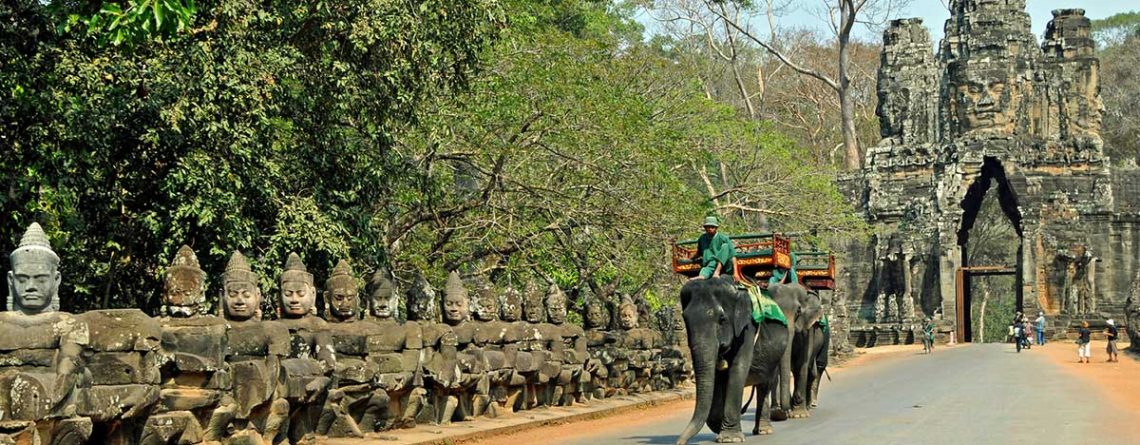
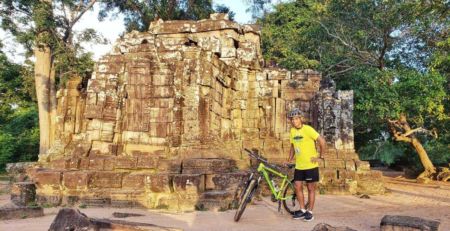

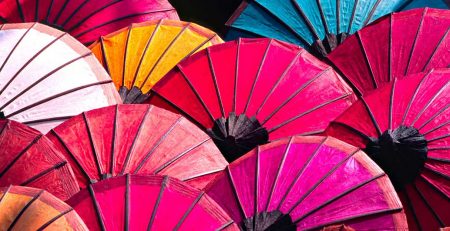
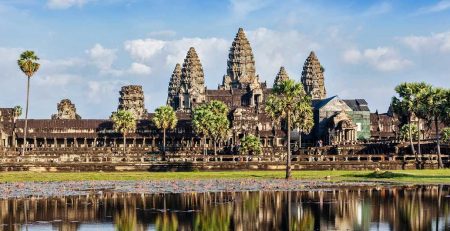
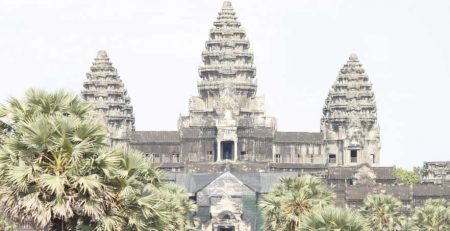

Leave a Reply